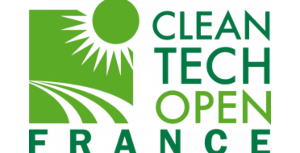Artificial intelligence is considered a future-oriented field by many industrial players and the French government. At the European Patent Office (EPO), inventions in the field of artificial intelligence and Machine Learning are treated as computer-implemented inventions, and as such, are subject to the specific provisions related to computer-implemented inventions.
Article 52 of the European Patent Convention states:
Article 52
Patentable Inventions
- European patents shall be granted for any inventions, in all fields of technology, provided that they are new, involve an inventive step, and are susceptible of industrial application.
- The following in particular shall not be regarded as inventions within the meaning of paragraph 1:
a) discoveries, scientific theories, and mathematical methods;
b) aesthetic creations;
c) schemes, rules, and methods for performing mental acts, playing games, or doing business, and programs for computers;
d) presentations of information. - Paragraph 2 shall exclude patentability of the subject-matter or activities referred to therein only to the extent to which a European patent application or European patent relates to such subject-matter or activities as such.
Thus, computer programs are excluded from patentability, but only as such.
For many years, the European Patent Office has developed a particular practice for examining computer-implemented inventions, notably with the fundamental concept of technical character and the "two-hurdle approach." According to this approach, only technical features contribute to inventive step, with non-technical features being disregarded in the analysis.
The COMVIK decision (T 641/00) by a Board of Appeal of the European Patent Office played an important role by clarifying: "An invention consisting of a mix of technical and non-technical features and having technical character as a whole must be assessed with regard to the requirement of inventive step, taking into account all features which contribute to said technical character, whereas features that do not contribute to the technical character cannot support the presence of an inventive step."
This principle is known as the COMVIK approach, which has been confirmed by numerous decisions of the Boards of Appeal of the European Patent Office, notably by the decision G1/19 of the Enlarged Board of Appeal. According to this approach, the technical contribution of the invention is analyzed to assess inventive step.
The Guidelines for Examination in the European Patent Office also contain provisions specifically addressing inventions related to artificial intelligence and Machine Learning, particularly in section G-II, 3.3 (Mathematical Methods), and more specifically in subsection G-II, 3.3.1.
This subsection includes the following passages:
3.3.1 Artificial Intelligence and Machine Learning
Artificial intelligence and Machine Learning are based on computational models and algorithms used for classification, clustering, regression, and dimensionality reduction. Examples include neural networks, genetic algorithms, support vector machines, k-means, kernel regression, and discriminant analysis. These computational models and algorithms are, as such, mathematically abstract in nature, regardless of whether they can be "trained" using training data. Consequently, the guidance provided in G-II, 3.3 generally applies to such computational models and algorithms.
[...]
The technical effect that a Machine Learning algorithm produces can be easily identified or established through explanations, mathematical proofs, experimental data, or other means. Although mere assertions are not sufficient, detailed proof is also not necessary. If the technical effect depends on particular characteristics of the training dataset used, these characteristics, which are necessary for reproducing the technical effect, must be disclosed unless a person skilled in the art could determine them without undue burden using general knowledge. However, in general, it is not necessary to disclose the specific training dataset itself (see also F-III, 3 and G-VII, 5.2).
Thus, as we have seen, the European Patent Office has developed a specific practice for examining patent applications related to the fields of artificial intelligence and Machine Learning. It is essential to pay particular attention to these patent applications. The experts at Santarelli Group are well-positioned to assist and advise you in a relevant and effective manner regarding the protection of these future-oriented innovations.
By Samuel Deschamps













